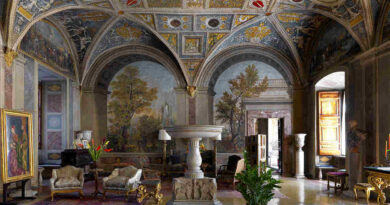Possible Medieval Road Uncovered Near Bannockburn Battlefield
A large section of road was discovered on Saturday at Coxet Hill in Stirling during the first-ever dig. King Robert the Bruce is thought to have set up his camp atop the hill to prepare for the war before the first day of fighting, on June 23, 1314.
On the critical second day, when the English army was forced to retreat, it is possible that Bruce’s camp followers and troops who had not been schooled in Bruce’s tactics were based there.
After King Edward II’s army had won, the “Sma’ Folk” emerged from the hill to block the retreat to Stirling Castle and convert the triumph into a defeat.
Read also: Roman weapons deposit unearthed at Son Catlar prehistoric settlement
In the 13th century, King Alexander III created the hill as a hunting wood for game birds. Stirling archaeologist Dr Murray Cook, who organised the excavation to commemorate its 707th anniversary, said the stone-built route would have gone around it.
According to Dr. Cook, the Sma’ Folk may have utilised this way when they sowed panic in the English lines during the Battle of Culloden.
According to Dr Cook, Alexander III’s New Park now looks to have a road around it instead of a border. The four-metre-wide portion of it is 100 metres in length.
In the previous 200 years, no maps have shown this hard-packed stone road or track, which implies it has a mediaeval history.
In addition, the fact that it’s located near the mediaeval royal wood implies that it was in use before the Battle of Bannockburn. Robert the Bruce would have utilised it if he had thought to do so.
Possibly, the Sma’ Folk used this road to [the Battle of] Bannockburn.
It was fought on June 23 and 24, 1314. Edinburgh Castle was under siege by the Scots, and King Edward II came to Scotland to crush them.
Read also: Archaeologists find new urban precinct in the Egyptian settlement of Marea
Robert Bruce’s army, which numbered up to 25,000 soldiers, were vastly outnumbered by Edward’s army, yet the Scots won. The Scots won the second day of combat after a day of skirmishes.
A retreat to Stirling Castle could have allowed the English force to reorganise and fight another day, but their way was barred by the Scots.
When the Sma’ Folk realised Bruce was winning, they came from behind Coxet Hill, causing fear among the English troops.
This region was formerly walked by famous heroes like Robert the Bruce, according to Dr Cook. Quite a bit of the original material has been preserved.”
Read also: Underwater archaeologists discover ancient shipwrecks in the sunken city




